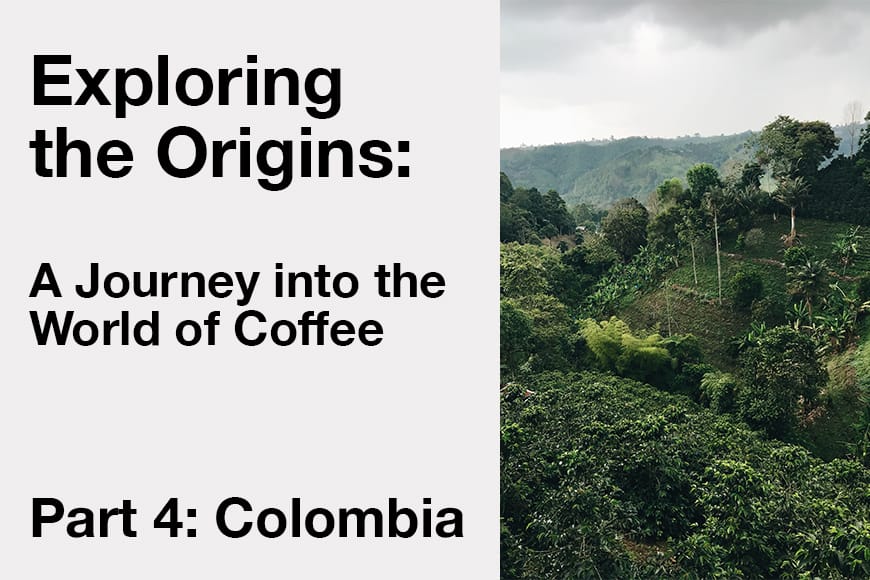Exploring the World of Coffee: Colombia

In the fourth part of our Exploring the Origins series, we continue our exploration by embarking on an exciting expedition to Colombia, a country known for its exceptional coffee heritage. Renowned for its high-quality Arabica beans and picturesque coffee landscapes, Colombia offers a captivating experience for coffee enthusiasts. Join us as we delve into the fascinating world of Colombian coffee.
Colombia’s Coffee Heritage
Colombia has a rich and vibrant coffee culture that stretches back centuries. Coffee production plays a significant role in the country’s economy and has become an integral part of its identity. Colombian coffee is celebrated globally for its consistent quality, exquisite flavours, and the dedication of its coffee farmers.
The Coffee Growing Regions
Colombia’s diverse geography and microclimates contribute to the country’s exceptional coffee-growing regions. Notable regions include:
Eje Cafetero (Coffee Axis) This region, also known as the “Coffee Triangle,” encompasses Caldas, Quindio and Risaralda. It produces some of Colombia’s finest Arabica beans, known for their bright acidity, medium body and flavours ranging from fruity and floral to caramel and chocolate.
Huila Situated in the southwest, Huila is recognised for its high-altitude coffee farms and specialty coffee production. Huila’s Arabica beans exhibit a balanced acidity, a full body and flavour notes of tropical fruits, caramel, and cocoa.
Nariño Located in the southwestern Andean region, Nariño is known for its unique microclimates and volcanic soil. The coffee from this region is characterised by its bright acidity, floral aromas, and complex flavour profiles with notes of citrus, berries, and chocolate.
Flavour Profiles and Processing Methods
Colombian coffee is celebrated for its exceptional flavour profiles, which are influenced by the country’s altitude, climate, and meticulous processing methods. Colombian Arabica beans often offer a well-balanced cup with a bright, lively acidity, medium body and flavours that can range from citrus and berries to chocolate and caramel. The most common processing methods used in Colombia include washed (wet) processing, which yields clean and bright flavours and natural (dry) processing, which enhances the coffee’s sweetness and body.
Juan Valdez and Sustainable Practices
Colombia is widely associated with the iconic character Juan Valdez, a symbol of Colombian coffee heritage. The Colombian Coffee Growers Federation (FNC) actively promotes sustainable farming practices, environmental preservation, and fair trade. Through initiatives such as the 4C Association and Rainforest Alliance certification, Colombian coffee farmers prioritise sustainability, ensuring a positive impact on both the environment and the communities.
Coffee Tourism and Experiences
Colombia’s coffee tourism industry offers visitors a chance to immerse themselves in the coffee culture. Coffee enthusiasts can visit coffee farms, participate in harvesting and processing activities, and even try their hand at cupping sessions to fully appreciate the complexity of Colombian coffee. Exploring the coffee regions of Colombia provides a rich and enlightening experience for travelers.
Terbodore coffee blends that feature Ugandan origin include Mac Espresso, Mocha Java and Revival.
Colombia’s coffee legacy is steeped in tradition, excellence, and a deep connection to its land. From its world-renowned Arabica beans to the breathtaking coffee landscapes, Colombia continues to enchant coffee enthusiasts worldwide. Join us in the next installment of our series as we continue our journey through the captivating origins of this beloved beverage.